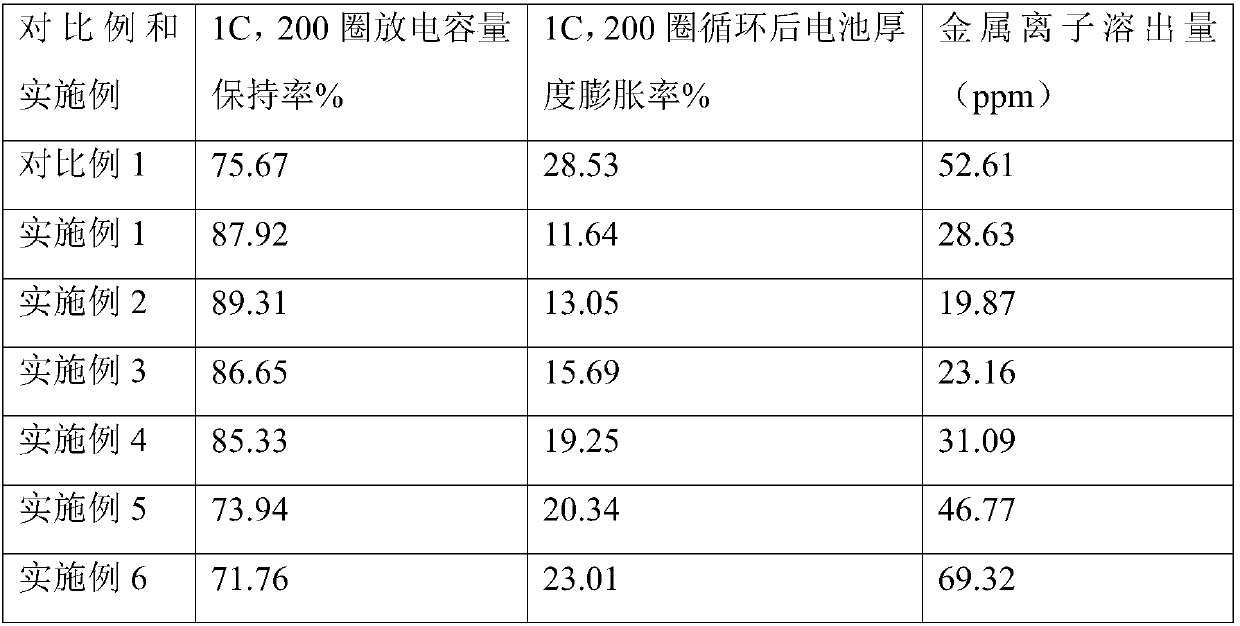Non-aqueous electrolyte and secondary lithium battery
A non-aqueous electrolyte and lithium salt technology, applied in the field of materials, can solve the problems of restricting the performance of positive electrode materials, battery capacity decay, and cycle performance reduction, and achieve the effects of improving capacity retention, reducing thickness expansion, and inhibiting dissolution.
- Summary
- Abstract
- Description
- Claims
- Application Information
AI Technical Summary
Problems solved by technology
Method used
Image
Examples
Embodiment 1
[0033] lithium salt LiPF 6 Soluble in a mixed solvent of ethylene carbonate / ethyl methyl carbonate / dimethyl carbonate / propylene carbonate (mass ratio 30 / 55 / 10 / 5), in which LiPF 6 The concentration is 1mol / L, and 0.1% of The electrolyte solution of the present invention is obtained.
Embodiment 2
[0035] lithium salt LiPF 6 Soluble in a mixed solvent of ethylene carbonate / ethyl methyl carbonate / dimethyl carbonate / propylene carbonate (mass ratio 30 / 55 / 10 / 5), in which LiPF 6 The concentration is 1mol / L, and 0.2% of The electrolyte solution of the present invention is obtained.
Embodiment 3
[0037] lithium salt LiPF 6 Soluble in a mixed solvent of ethylene carbonate / ethyl methyl carbonate / dimethyl carbonate / propylene carbonate (mass ratio 30 / 55 / 10 / 5), in which LiPF 6 The concentration is 1mol / L, and 0.5% of The electrolyte solution of the present invention is obtained.
PUM
 Login to View More
Login to View More Abstract
Description
Claims
Application Information
 Login to View More
Login to View More - Generate Ideas
- Intellectual Property
- Life Sciences
- Materials
- Tech Scout
- Unparalleled Data Quality
- Higher Quality Content
- 60% Fewer Hallucinations
Browse by: Latest US Patents, China's latest patents, Technical Efficacy Thesaurus, Application Domain, Technology Topic, Popular Technical Reports.
© 2025 PatSnap. All rights reserved.Legal|Privacy policy|Modern Slavery Act Transparency Statement|Sitemap|About US| Contact US: help@patsnap.com

